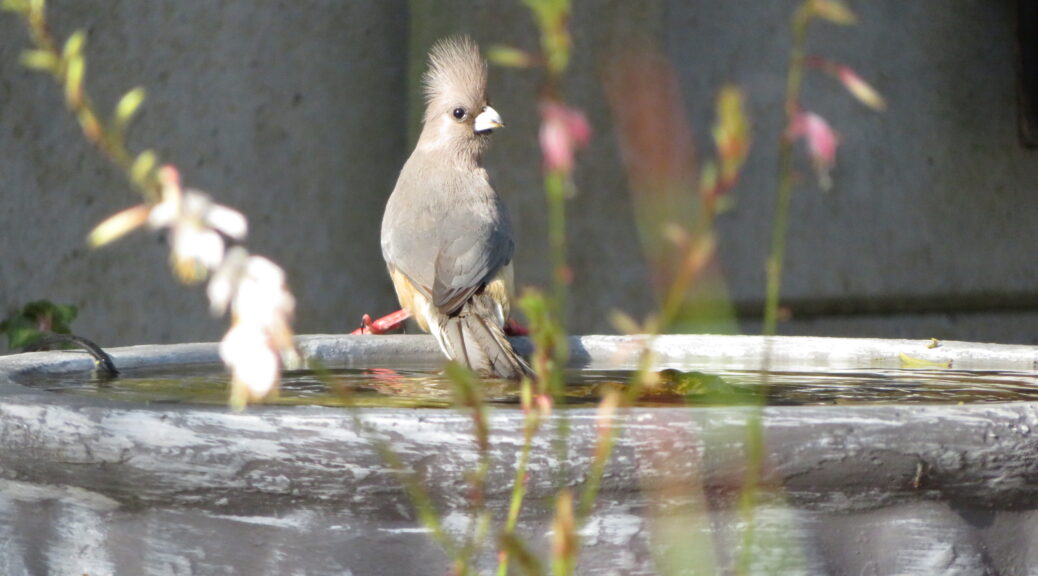
The birds in my garden – Mousebirds
It is encouraging to see the different bird species that have made their homes in my garden over the years. I love watching them. Each with their own special characteristics and habits. One bird that is particularly amusing to watch is the mousebird. I call them my garden acrobats.
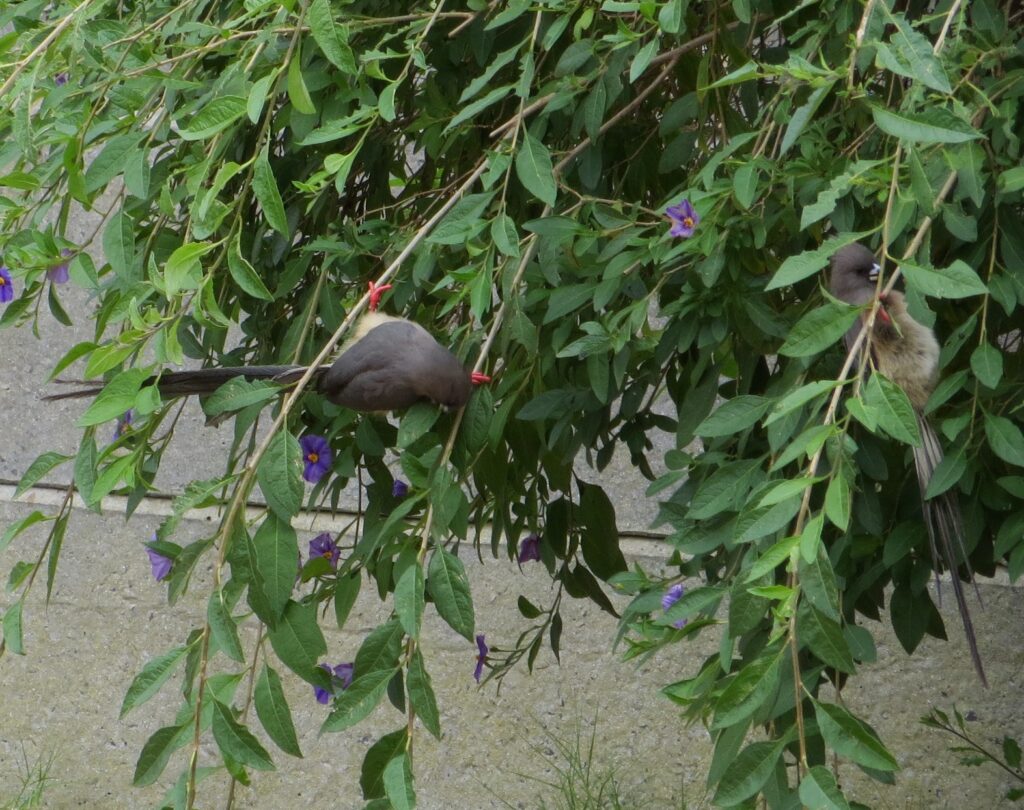
Three species of mousebird are found in South Africa. I am fortunate to have two of them in my garden: the white-backed mousebird (Colius colius) and the red-faced mousebird (Urocolius indicus). The third species is the speckled mousebird (Colius striatus).
Mousebirds’ bodies are only about 10 cm in length. They have very long tail feathers adding about another 20 – 24 cm to their total length. The white-backed mousebird is predominantly grey with a pale brownish-yellow belly. The red-faced mousebirds are a russet colour with red skin around their eyes. They have red colouring on their beaks while the white-backed mousebird’s beak is whitish grey with a black tip. Their feathers are soft and downy and their fluffy crests give them a quirky look.
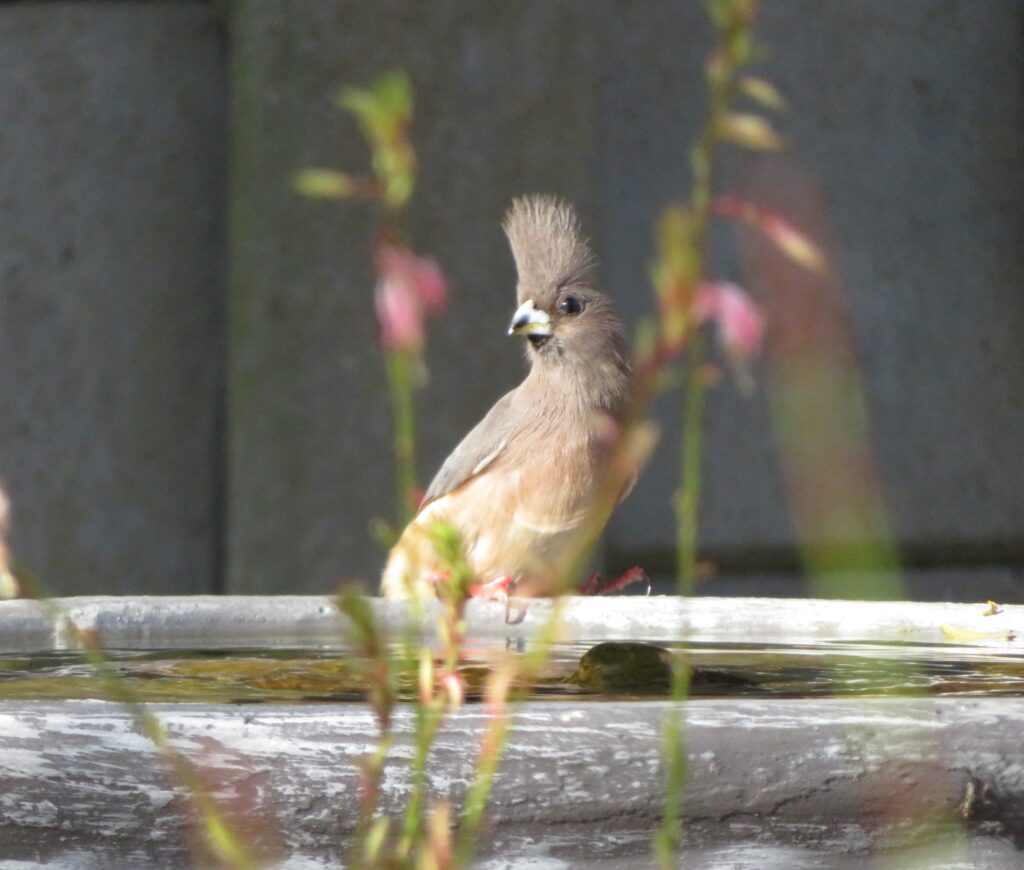
How the mousebird got its name
If you ask Google why they are called mousebirds the usual answer is it is because they scamper through the leaves in a similar way mice would. My theory (and this is particularly relevant for the white-backed mousebird) is that it may be because the markings on their back have the same stripes and colouring of a little field mouse. Together with the bird’s long tail feathers it really gives the impression of a mouse. Their body feathers have a soft, fluffy look and when they are scuttling around in the tree branches they could be mistaken for rodents at a quick glance.
The photo below shows a white-backed mousebird in flight displaying its striped back feathers.
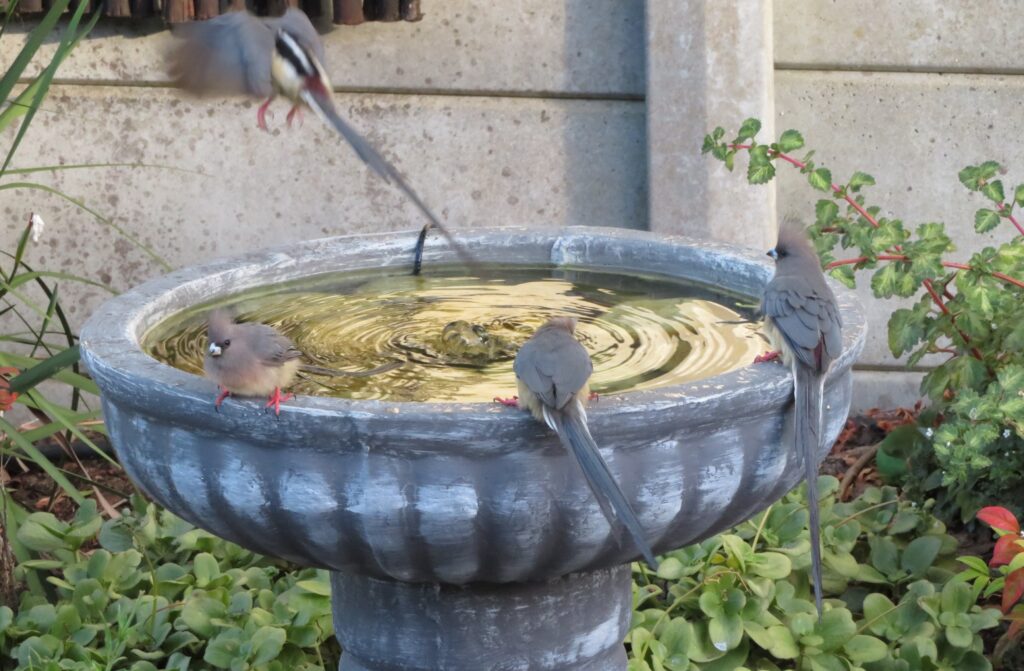
I find their acrobatic antics quite entertaining to watch. They sort of crash land into the bushes and then hang on the branches. They don’t seem to perch like regular birds – they hang. Usually they are straddled over two branches with their bright red feet visible. Mousebirds can even hang upside down while they eat.
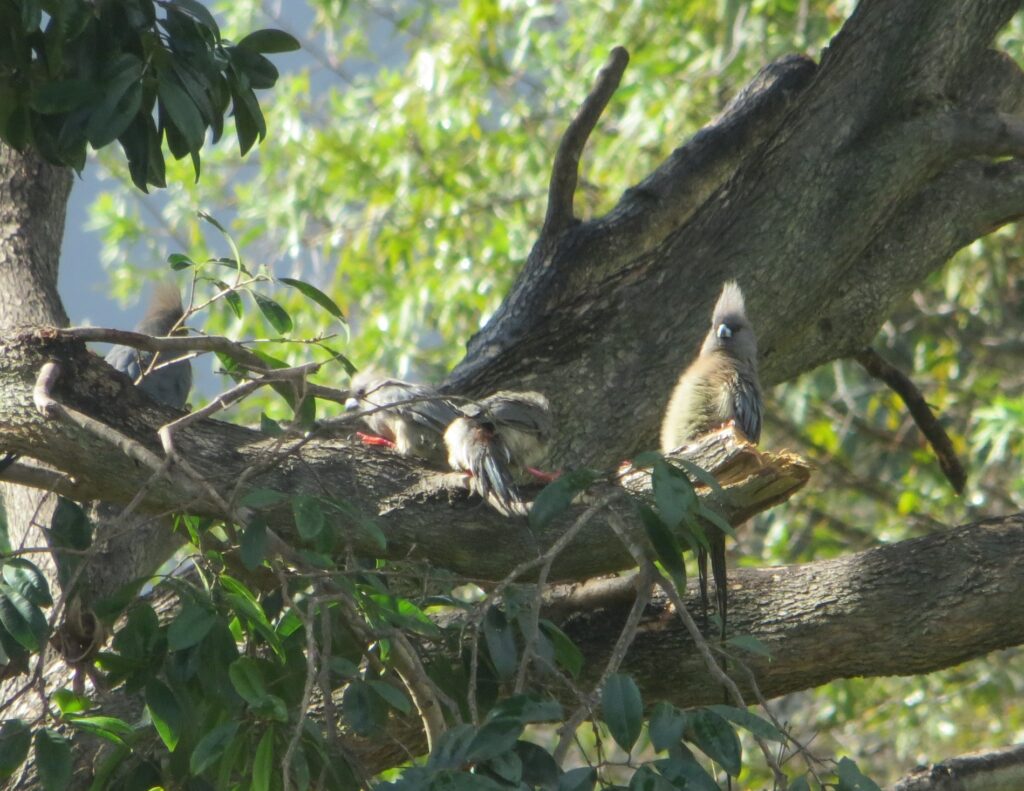
Now I don’t speak bird but according to Newman’s book Garden Birds the white-backed mousebird has a musical ‘swee, weewit’ call. The red-faced mousebird makes a melodious descending ‘chui-chui-chui’.
I have learned to recognise their calls and know when to look out for them. Sure enough, I’ll spot a couple of the white-backed mousebirds sitting in the grenadilla vine or in the sweet pepper bush. The red-faced mousebirds have stayed out of the veggie garden. They prefer to hang around in the leopard trees or in the karee’s branches above the bird bath.
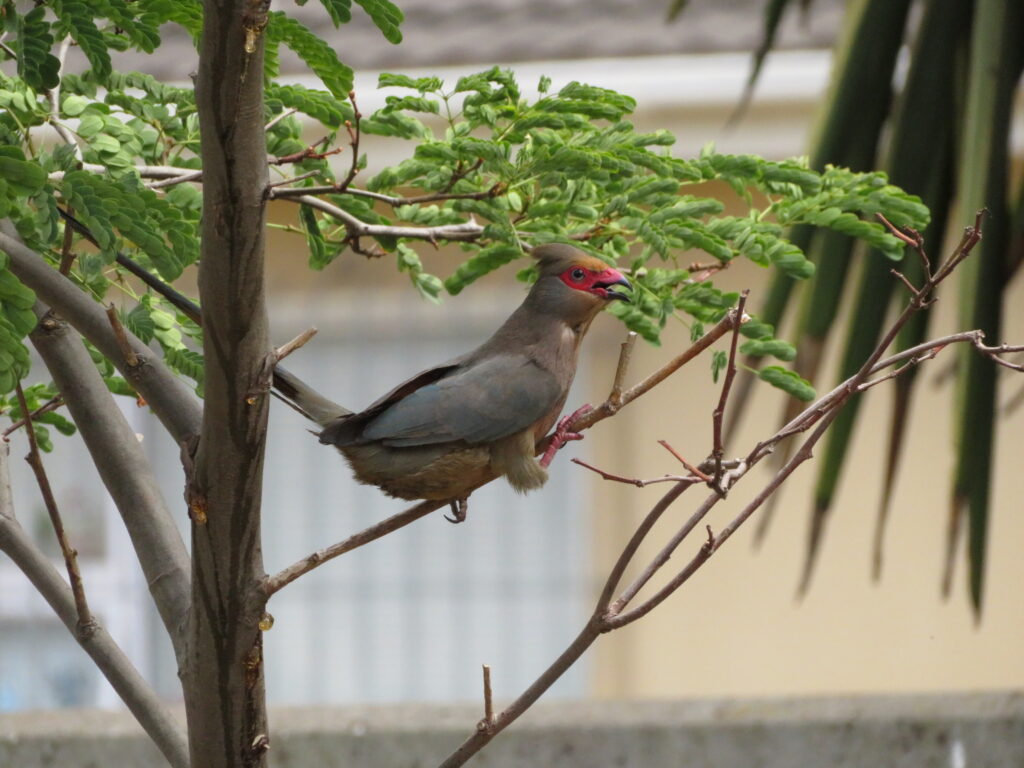
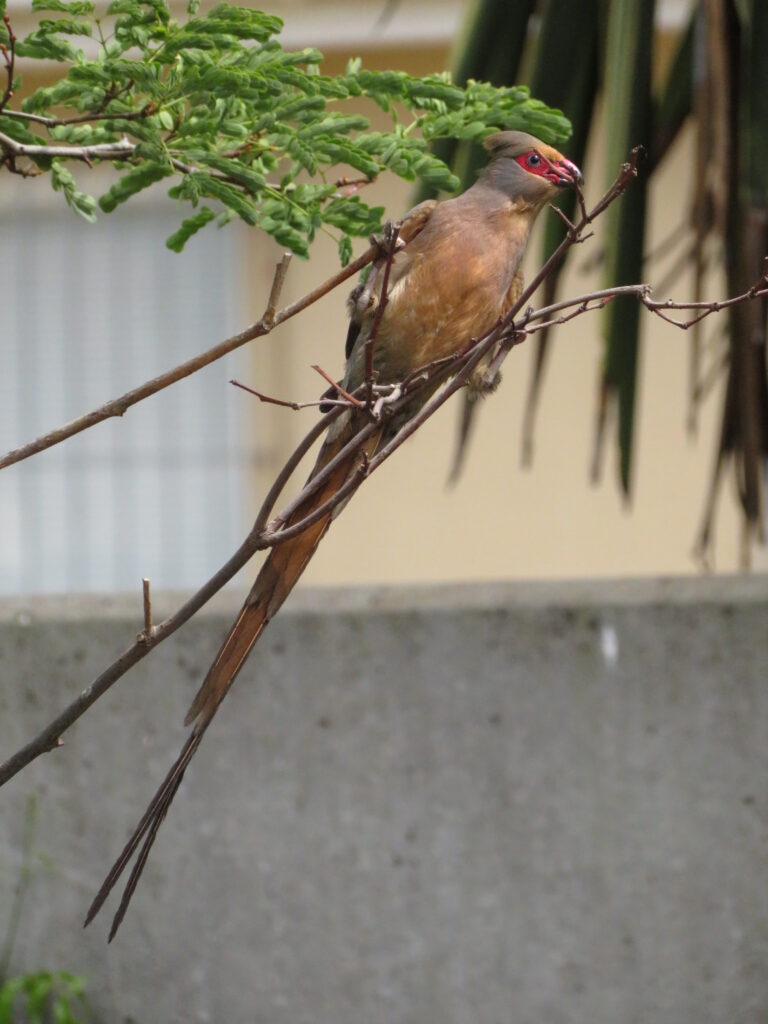
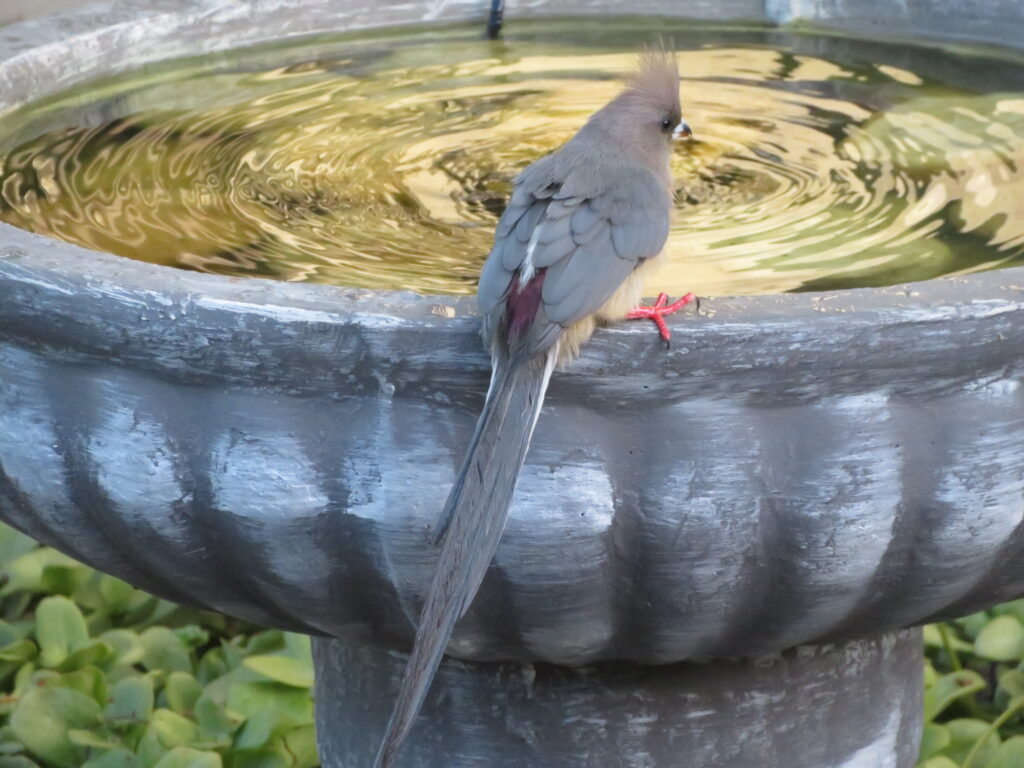
What do mousebirds eat?
The white-backed mousebirds in my garden have been helping with some pruning work. They enjoy eating the leaves on the potato bush (Lycianthes rantonnetii). More recently I’ve noticed that they have been hanging around in the veggie garden. They seem to have a liking for the granadilla leaves and also those of my sweet pepper bush. Fortunately they have not been eating the peppers. I’m not sure who is responsible for the beak marks on the tomato pictured below. Mousebirds do eat fruit, so it may have been one of them. It could also have been a barbet though. Barbets are quite cunning when it comes to eating my tomatoes.
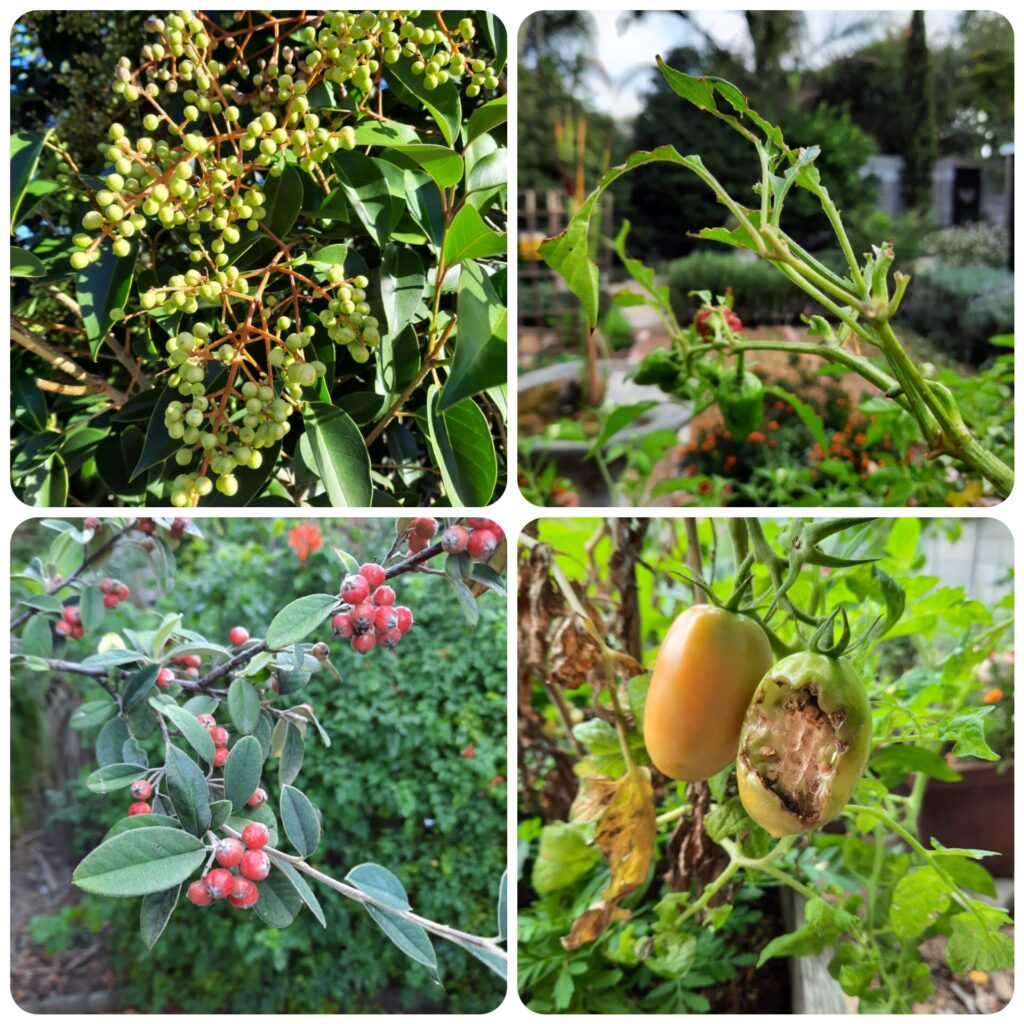
Mousebirds enjoy eating fruit and berries. The neighbour’s fig tree is always a target in the summer months. Now during autumn, the mousebirds will be able to feast on the Cotoneaster berries. The Privet berries are still ripening so there is bound to be a constant source of food for them during the coming months. I also read that they enjoy peas. I’ll have to keep an eye out for when my winter veg are growing and make sure I have a sufficient supply for myself as well as for the birds.
The birds in my garden
I have found it certainly pays to increase biodiversity. A larger variety of plants means more food diversity and therefore a wider range of birds that are likely to visit. There are seventeen different types of birds, including the mousebirds, that I regularly see in my garden. Two to three additional species usually make an annual appearance. Sometimes it is just for a brief stop at the bird bath before continuing on their journey.
It is always such a joy to sit in the late afternoons and watch as the birds come for a drink or a splash in the bird bath. In fact I think I’ll go grab a sundowner and head out to the patio and see if I can spot my garden acrobats getting up to their antics.
Until next time, happy birdwatching.
2 thoughts on “The birds in my garden – Mousebirds”
We get the white backed mousebird here and have noticed that they eat the leaves of the Cestrum Nocturnum. A well written and informative blog.
Thank you for the compliment. Their diet certainly is varied – I have even noticed the mousebirds eating the leaves of the gooseberry bush too.
Comments are closed.